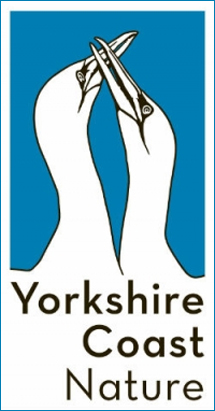Weekly round-up: 27 Nov - 03 Dec 2013
The weather this week took a turn for the cloudy, grey and unremarkable over much of the UK, though northern Scotland continued to be blasted by northwesterly winds of varying strengths.
With generally milder temperatures across the UK the week felt more autumnal than wintery for most, and with some tasty birds still out there, it felt like autumn wasn’t quite over yet… but new arrivals suggested that winter was a-knocking at long last….
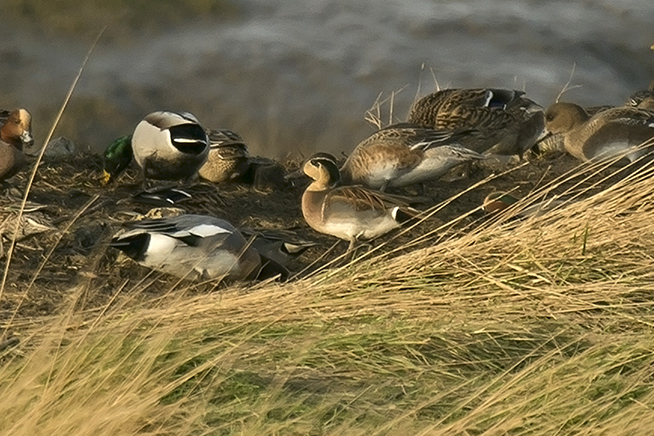
2013 really is the year that keeps on giving, and to the delight of many the latest offering for once wasn’t a one day bird or found on a far-flung island. That said, being a rare duck albeit one fully-winged and unringed, it wasn’t without some controversy...
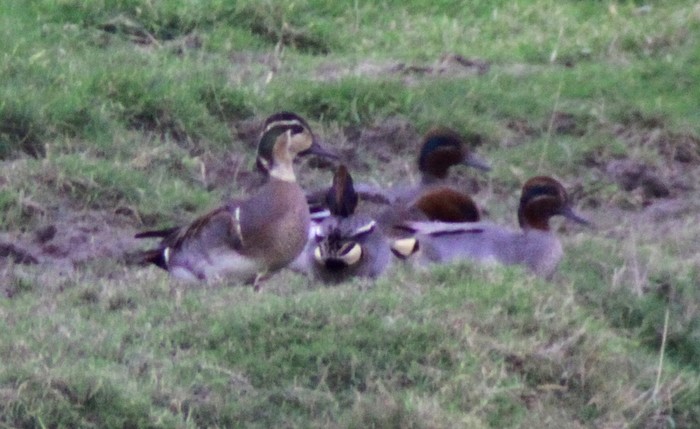
Found at Marshside (Lancashire) on November 30th initial excitement about an adult drake Baikal Teal was somewhat tempered by the reports of an apparent hybrid duck ‘showing characteristics of Baikal Teal’ (and Common Teal) at the same site in the days previous. As if the spectre of dodgy dabblings on the duckpond wasn’t bad enough, there was also the small matter of the hitherto presumed escape Ross’s Goose at the same site. What on earth was going on at Marshside?
The initial photographs and views on December 1st helped to allay initial fears as to the birds genetic purity; the bird looked good after all for Britain’s 5th record of Baikal Teal, and was helpfully hanging out with Wigeon and Teal and doing its best to look wild. Of course, with all vagrant wildfowl there’s always the taint of suspicion of an origin more local than overseas, but this bird, still present on December 3rd, has perhaps by now earned the right to be presumed innocent until proven guilty – unringed, fully-winged, no signs of hybridisation, arrived at a ‘good’ time of year, and behaving like a wild bird. Recent accepted records of North American sawbills in supposedly unlikely locations have made the grade, so what’s not to like about this handsome bird?
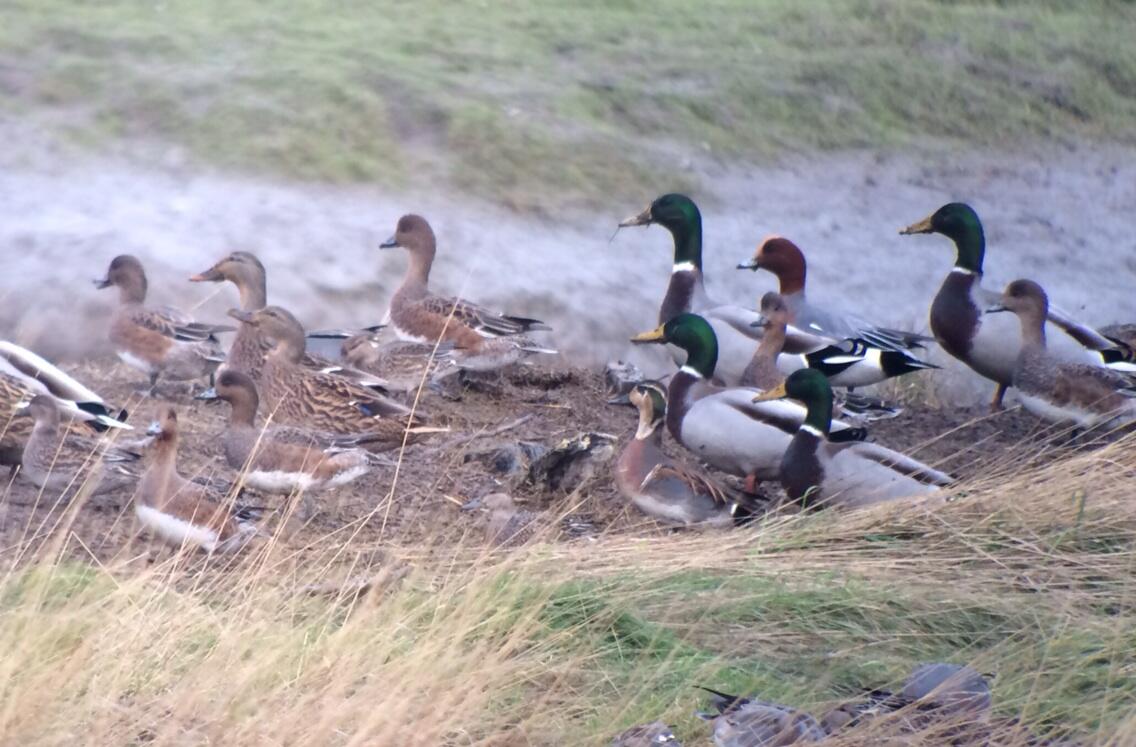
(It’s probably best not to spend too much time investigating online just how many suppliers of ornamental wildfowl in the UK offer Baikal Teal, Bufflehead and Hooded Mergansers – there are rather a lot of them, and after living in Chilham, Kent some years ago a couple of miles from a farm shop that had Hooded Mergansers bobbing on their duckpond I know all too well how alluring these things are…)
Previous accepted records were as follows; in addition to the 4 in Britain there’s been a single record from Ireland.
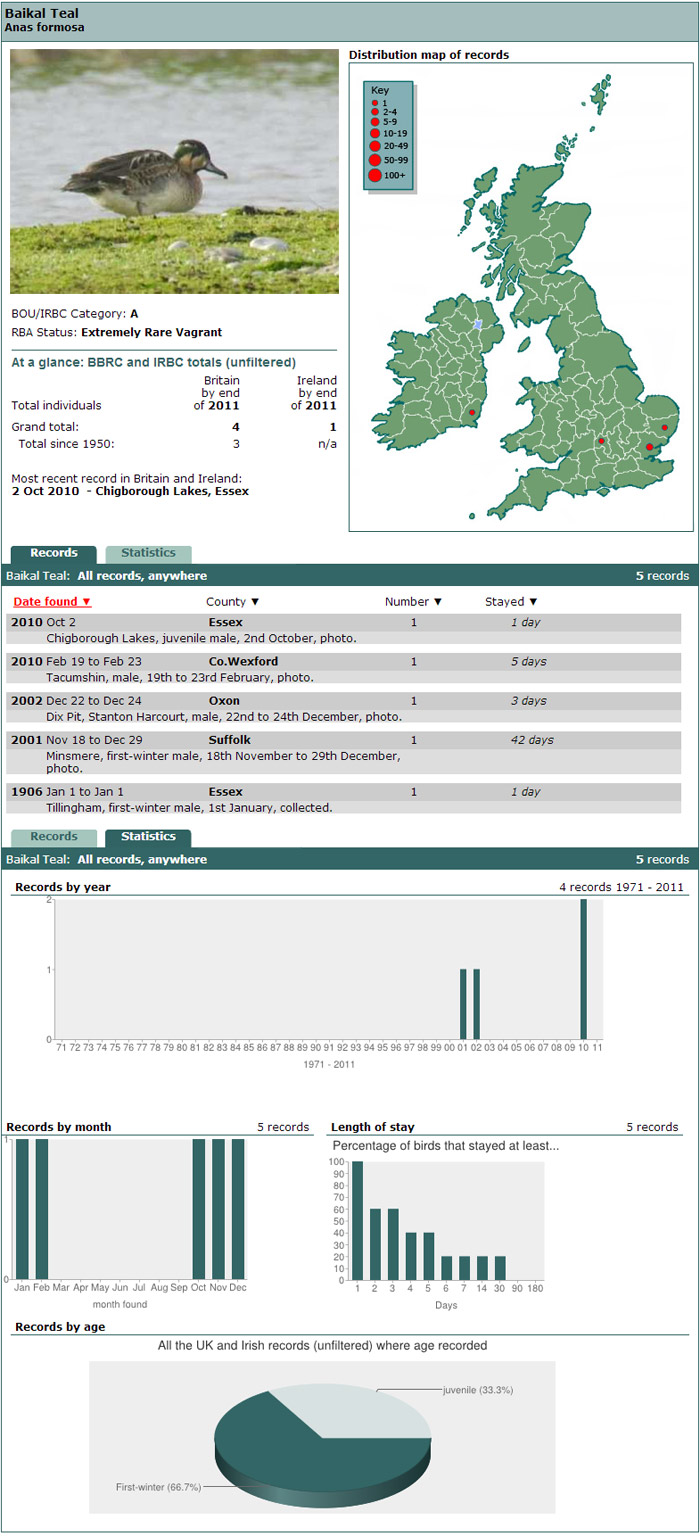
The week was destined to finish with a bang and not a whimper, and bangs don’t come much bigger than breaking news of a Brunnich’s Guillemot viewable from the British mainland. Just as night was falling on the afternoon of December 3rd news broke of a first-winter showing well, albeit briefly, on the sea at Coble Landing, Filey (North Yorkshire).
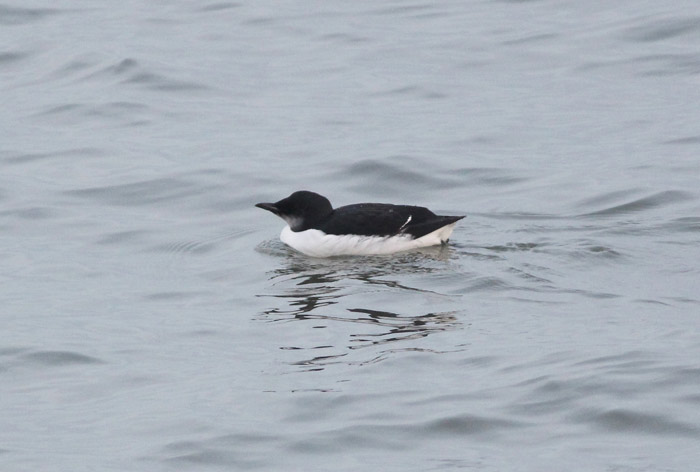
Just how remarkable a record this will prove to be is borne out by the statistics: of the previous 43 accepted records for Britain and Ireland, a mere 3 birds have been south of Scotland; found dead near Morecambe (Lancashire) on April 15th 1960; at the Farne Islands (Northumberland) on July 13th 1970; and at Ballyteigue Bay (Co.Wexford) on December 24th 1986. Worse still, of those 43 accepted British and Irish records a depressing 25 (or 58%) of those have been found dead. Is there any other species with a worse record of being found dead on arrival?
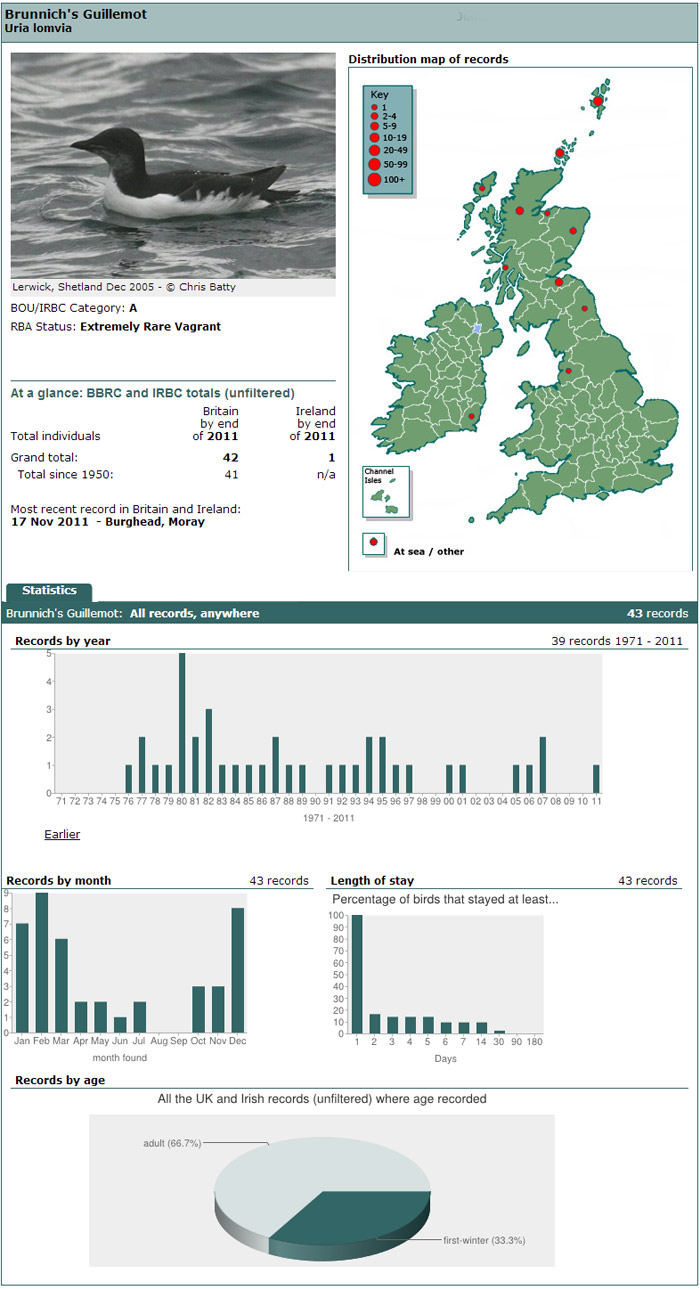
Another unfortunate statistic from the species’ chequered past reveals a propensity for the live birds to only be seen on one day… But there are a few records where birds have lasted longer than this, so there’s some slim hope to be clung to for anyone who didn’t make the long pilgrimage north for the last properly twitchable bird, the confiding individual that lingered for 21 days in Lerwick Harbour (Shetland) in December 2005.
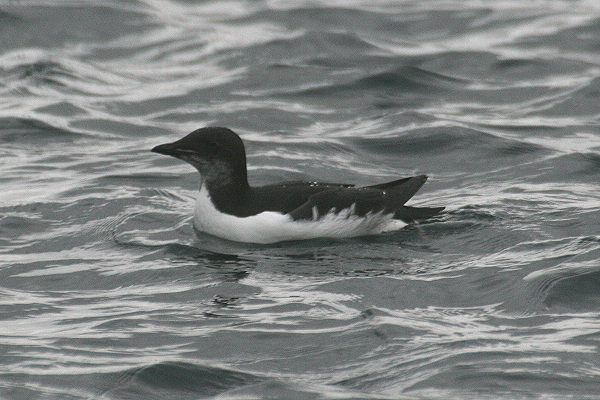
A clue to imminent further arrivals from Arctic waters had already revealed itself earlier in the week to a fortunate observer at Seaburn (Co.Durham), who was treated to the spectacle of a fine juvenile Ivory Gull flying north along the beach. With the last British record of this enigmatic Arctic larid south of the border dating back to 2002 (Glamorgan, November 29th – December 5th) this too would have proved popular had it stuck around.
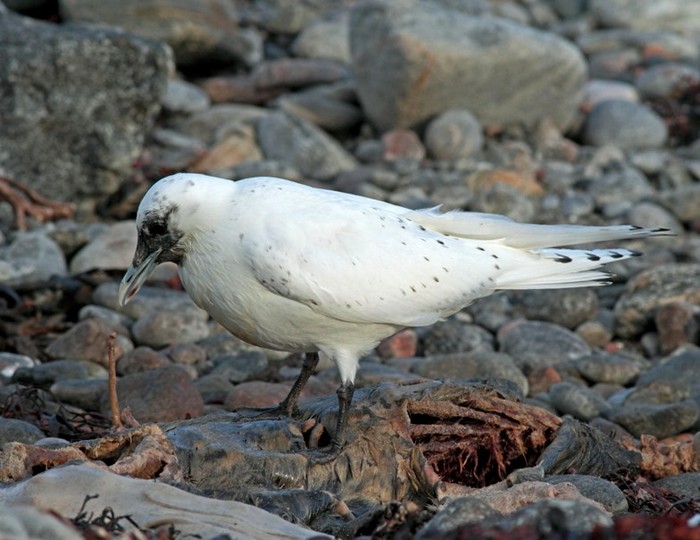
With the complex and evolving taxonomy of the Stonechat tribe covered in some detail in last weeks Rarity Round-Up, birders continued to have the opportunity to pop over to Scilly this week to enjoy Scilly’s first, and Britain’s fourth , Caspian Stonechat. Whether or not that bird should be labelled form variegatus or hemprichii remains moot, but that notwithstanding this charming first-winter male surely deserves all the attention it has been getting.
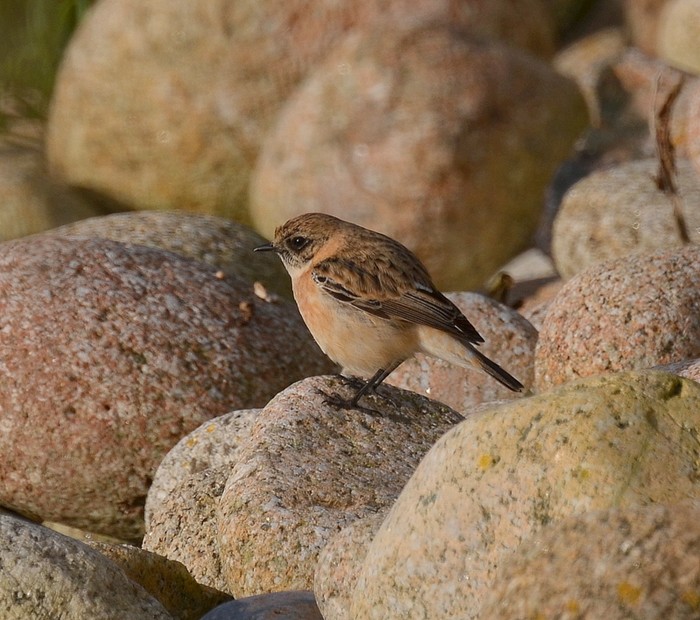
Still present all week at St. Warna’s Cove, this obligingly long-staying individual will have been pencilled in on many an insurance list by the end of its stay. With growing awareness of the subtleties of what currently resides in the Siberian Stonechat complex we can surely expect more individuals to be picked out in the coming years...
From one end of the country to the other, and another quality bird that lingered into the new week. The third American Robin of the autumn continued to delight all week at South Loch Eynort on South Uist (Outer Hebrides). With the species occurring almost every other year in the past decade, and the two previous records of this year being in the rather more accessible southwest of England, this striking bird was never going to induce many to make the long trek north… but nothing should detract from a bird that combines both rarity and eye-wateringly lurid good looks.
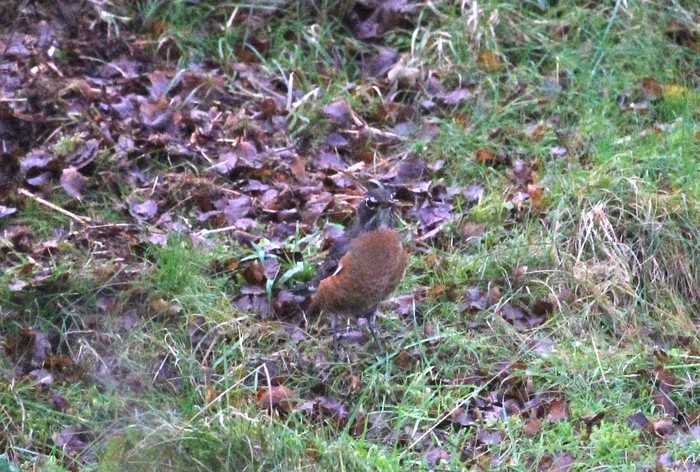
As might be expected for an American vagrant species, past records show a distinct south-westerly bias, with this bird being only the 9th for Scotland and just the second for the Outer Hebrides. With three recorded already this autumn, what odds another one coming out of the woodwork shortly? Past records from the winter period in Surrey hint that this is a species that could probably turn up anywhere, and a bird in the Home Counties would certainly draw a crowd.
In Cornwall, the now almost-expected over-wintering Pacific Diver teased with a report coming on 27th, though not subsequently. Odds are it’s still out there though…
Late skuas were logged passing throughout the week, with a Long-tailed Skua passing Spurn (E Yorks) on 29th, and Pomarine Skuas off Portland Bill (Dorset) on 29th, Reculver (Kent) on 30th, Thorpeness (Suffolk) on December 2nd, and Minsmere (Suffolk) on 3rd.
A handful of Leach’s Storm-petrels were recorded during the week: 2 in the Minch from the Uig-Lochmaddy ferry (Highland/Western Isles) on November 27th, and 1 reported past Thorpeness (Suffolk) on December 2nd.
Shearwaters were represented by single Balearic Shearwaters off Gorleston-on-sea (Norfolk) on November 30th, Thorpeness (Suffolk) on December 2nd, and Thurlestone (Devon) on 3rd; and parties of 2 birds past Portland Bill (Dorset) and 5 birds past Pendennis Point (Cornwall), both on 3rd. Little Auk numbers continued to be on the low side, with 4 birds recorded passing Filey (N Yorks) and single birds off Flamborough (E Yorks) also on the 30th, and Scapa Bay (Orkney) on December 1st.
Glossy Ibis numbers were on the up this week with the single birds at Tacumshin (Co. Wexford) lingering from November 27th until December 2nd and at Chew Valley Lake(Somerset) from 28th to 30th . Meanwhile, other singletons were seen at Maldon (Essex) and Middlebere (Dorset) on 30th, the Maldon bird remaining on site until 3rd. Also on the 3rd a bird was seen flying north over Carinish, North Uist (Western Isles) – the first record for the Western Isles since one was shot on South Uist in November 1910.

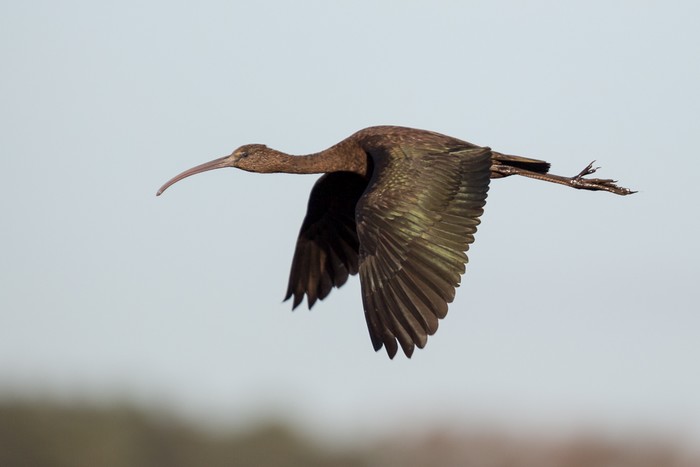
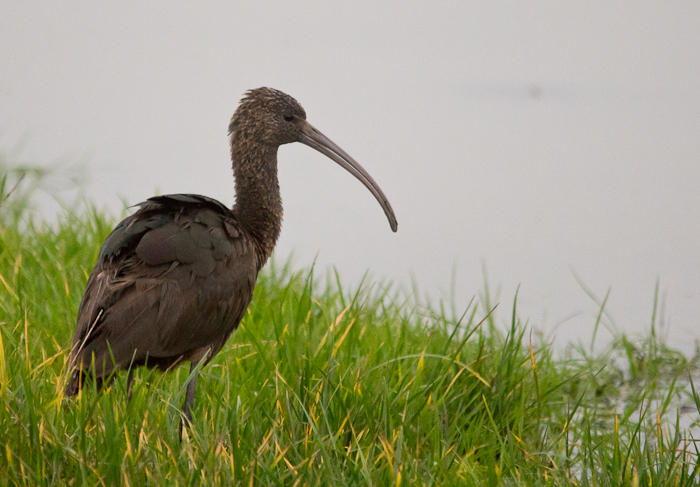
A report of a probable Purple Heron at Cley in the morning of 27th firmed up into a confirmed juvenile of the species at Holkham shortly afterwards. Presumably the same bird had moved further west along the coast the following day, being seen flying (west, what else?) over Titchwell on 28th.
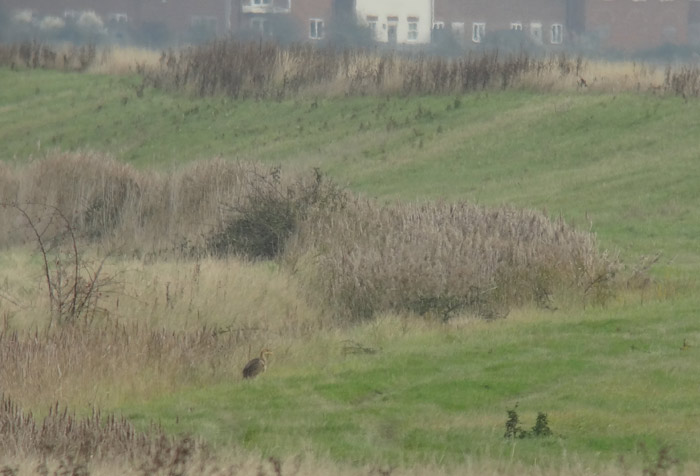
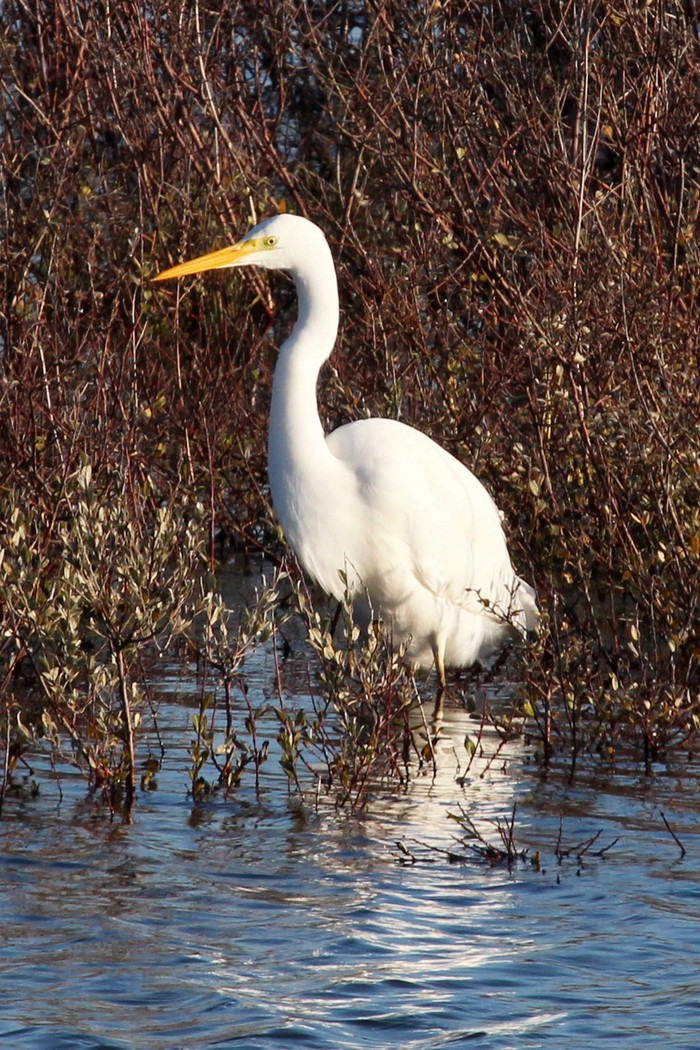
Great White Egrets remain a permanent fixture across England as far north as East Yorkshire, with numbers remaining around the 25 mark. Three birds were seen at Rye Harbour (East Sussex) on 28th–29th; at least three birds were at Dungeness (Kent) on 29th; and three birds were at Westhay Moor and Meare Heath (Somerset) on December 1st. Elsewhere, two birds were at Hornsea Mere (East Yorkshire) on 27th–1st, and a further two birds were at Pitsford Reservoir (Northamptonshire) from 27th until at least December 2nd. Records of single birds came from fourteen counties, including three in Wales.
Cattle Egrets also featured this week with two birds in Kent (at Upstreet from 28th – 30th, and at Swale NNR still on 29th) and at Calvert Lakes (Buckinghamshire) in the evening of December 2nd and early morning of 3rd . In Ireland one was recorded again at Hillsborough (Co.Down) on 1st.
Numbers of Spoonbill remained strong, particularly in Poole Harbour (Dorset) where the rather fluid scattered numbers coalesced into a spectacular flock of 26 birds at Brownsea Island Lagoon on November 29th and 20 birds on December 3rd. Outside of Poole Harbour two birds were recorded still island-hopping on Scilly on 29th and December 2nd; and two birds were still on the River Lynher (Cornwall) on 1st. Single birds were reported at Burton Marsh (Cheshire & Wirral) and Stanford-le-hope (Essex) on 27th; Mill Creek (East Sussex) until 30th; Spurn (East Yorkshire) on 1st; and Tetney Marshes (Lincolnshire) on 2nd. Meanwhile in Ireland the latest incumbent Spoonbill remained at Castle Espie WWT (Co.Down) until December 1st, and the individual at The Cunnigar (Co.Waterford) remained until 2nd at least.
Outside of the traditional Norfolk stronghold the best Common Cranes on offer were those on the Cambridgeshire Washes, with regular sightings through the week at Guyhirn culminating in nine birds together on December 3rd. Elsewhere single wandering birds were reported from Berry Head (Devon) on 29th and Gibralter Point (Lincolnshire) on 1st; and pairs in Scotland from Minard (Argyll) on 30th, and Crieff (Perth) on 3rd.

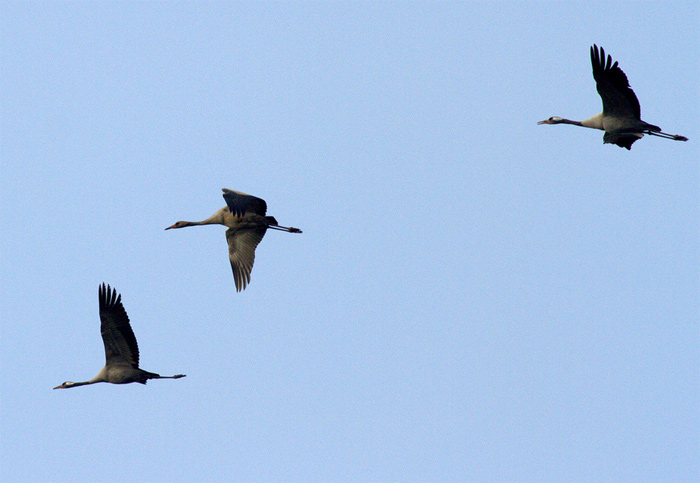
A Richardson’s Cackling Goose headed the bill in Ireland at Lissadell (Co.Sligo) on 28th. Elsewhere in Ireland, the adult Grey-bellied Brant-type was reported from Kilbarrack (Co. Dublin) until 27th. A further Irish record came from Dundrum Bay (Co.Down) on December 1st and was still present on 3rd.
Cley’s Black Brant continued in situ this week with the bird first reported last week elsewhere in Norfolk at Burnham Overy Staithe also seen between November 30th and December 1st. Elsewhere in East Anglia a fine adult was at King’s Fleet (Suffolk) on 1st. In Essex things went a little crazy this week with multiple sightings of multiple birds: 2 birds seen on Foulness Island and 3 birds at Burnham-on-crouch on December 1st alone. In the preceding days single birds had been reported from Colne Point on 29th – December 1st and Cudmore Grove on 30th.
Away from the Black Brant hotspot that is Essex, other records included birds on Farlington Marshes (Hampshire) until 2nd at least and Hayling Island (Hampshire) on 30th , briefly at Frampton (Lincolnshire) on 30th, Walney and Roa Islands (Cumbria) on 30th and 3rd respectively, and Ferrybridge (Dorset) on 30th – presumably this latter bird was one of 2 birds seen together elsewhere on The Fleet on 3rd.
An escaped and ringed Red-breasted Goose was at the traditional site of Caerlaverock WWT (Dumfries & Galloway) on 28th; perhaps the perfect example of how ‘bad’ wildfowl can turn up at ‘good’ sites…
The presumed escaped first-winter Ross’s Goose remained at Marshside RSPB (Lancashire) all week, with another bird of unknown provenance in Clwyd at Gresford Flash on December 1st. Meanwhile the presumed wild white Snow Goose remained at Carrahane Strand (Co. Kerry) to December 2nd. Meanwhile in Scotland it was all happening on the Snow Goose front with two birds remaining at Tayinloan (Argyll & Bute) to 29th, two white morphs reported from Loch of Strathbeg (Aberdeenshire) on 29th and Meikle Loch (Aberdeenshire) on December 2nd, two white morphs atand a blue morph at Loch of Kinnordy (Angus) on 30th, and a blue morph at Mains of Ballindarg (Angus) from 1st – 2nd.
Numbers of Green-winged Teals recorded in the period were up on last week with 8 reported, and November 27th staking a claim for best day of the week to see one; singles were recorded on that date at Loch of Lintrathen (Angus), Loch a’ Phuill (Tiree), Milton (Pembrokes), Rutland Water (Leicestershire) and Caerlaverock WWT (Dumfries & Galloway). A further singleton at Loch of Kinnordy (Angus) on 30th prefaced a couple more weekend sightings – a bird on Hickling Broad (Norfolk) on December 1st and the reappearance of the bird last seen on November 22nd on Gretchen Loch, North Ronaldsay (Orkney) also on the 1st – 2nd.
The female Lesser Scaup remained at Loch an Daill, South Uist (Outer Hebrides) until 28th, and was relocated at Loch an’t-Saile on December 3rd. Elsewhere Ireland dominated all things Lesser Scaup with first-winter females at Lough Leane (Co.Kerry) and Murlach, Ballyconneely (Co. Galway) on 28th, and the drake remaining on Kerry’s Lough Gill on 30th. In Wales, the drake remained in Cardiff Bay (Glamorgan on December 1st. Meanwhile, at Rutland Water (Leicestershire) a bird initially mooted as a drake felt the tide of opinion turn against it, with the consensus veering towards an Aythya hybrid. Tricky things, these vagrant ducks…
In Hampshire the drake Ferruginous Duck remained at Blashford Lakes HWT until 28th picking up its sporadic ways where it had left off at the end of the last winter period.
All Ring-necked Duck news this week was Irish, with three birds reported from Parasee Lake (Co.Cavan) on 28th, Lough Gill (Co.Kerry) on 30th, and Castleward (Co.Down) on December 1st.
Ireland also held two of the four American Wigeons including last weeks drake on Lough Neagh (Co. Antrim) until 30th, and the drake at Tullaghan (Co. Leitrim) to December 1st. Scotland provided the other half of the weeks tally with the Udale Bay (Highland) bird still present on 3rd, and another bird at Loch of Strathbeg (Aberdeenshire) also on 3rd.
The female King Eider remained in Blacksod Bay (Co. Mayo) to at least 30th.
Surf Scoters put in a good showing all week. The juvenile in Brand’s Bay, Poole Harbour (Dorset) remained all week whilst in Wales at Morfa Bychan (Gwynedd) two females were recorded from 27th onwards. Elsewhere in Wales in Conwy on 30th a single drake was at Llandulas, and two drakes (an adult and a juvenile) were at Pensarn. In Ireland, the 27th saw mention of the juvenile male again off Courtmacsherry (Co. Cork); the 30th a drake at Curracloe (Co.Wexford); and December 1st a female at Brandon Bay (Co.Kerry) and the bird at Ballinwilling Strand (Co.Cork) noted again.
The adult American Golden Plover remained in the fields near Sennen (Cornwall) all week long, while Hampshire’s Lesser Yellowlegs was at Lepe CP throughout the week.
The wintering adult Bonaparte’s Gull in south Devon was seen off and on in the Dawlish Warren area for much of the week, reported on November 30th to December 2nd at least. A report of a probable Bonaparte’s Gull at Portmarnock (Co.Dublin) came on 1st.
A probable Kumlien’s Gull was reported at Mallaig (Highland) on 27th, and confirmed Kumlien’s Gulls came from Rossaveal (Co.Galway) on 29th, and Barmston (E Yorks) on December 1st.
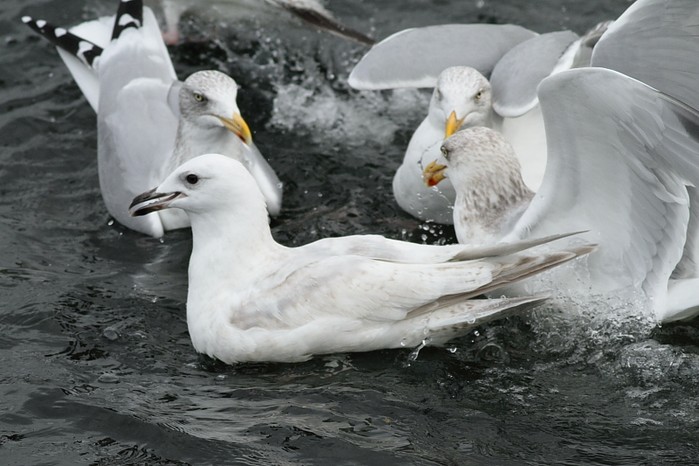
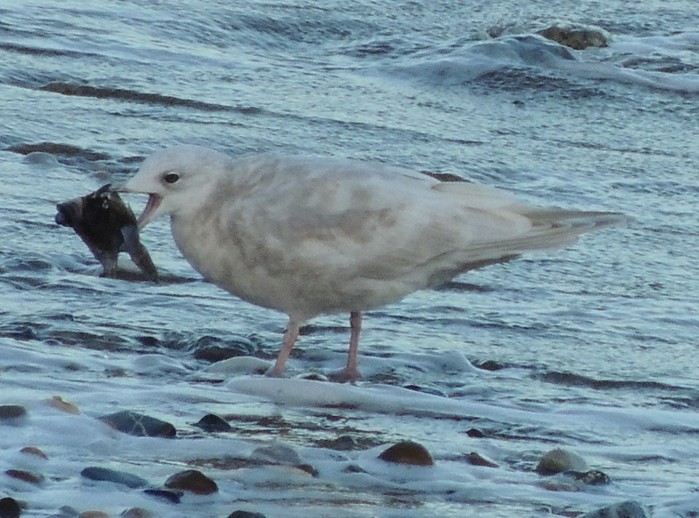
The numbers of Glaucous Gull recorded remained much the same as the preceeding week, with 19 birds logged from as far south as Dungeness (Kent) to as far north as Yell (Shetland), and spread across 11 counties. These included two birds at Chasewater, Staffs on 27th-28th and again on December 1st. Others were noted in Co.Wicklow, Highland, Shetland, Northumberland, North Yorkshire, Derbyshire, Staffordshire, Norfolk, Suffolk and Kent.
Iceland Gull numbers were more or less on a par with those of their larger white-winged counterparts ~ 25 recorded, all single birds bar two lingering birds off Brownsman (Farnes) on 27th-29th and two birds at Hoveringham GPs (Nottinghamshire) on 27th-28th. The observers of the bird feeding on a dead dolphin on Westray (Orkney) until 28th would surely have hoped that carcase would attract something rarer still… Elsewhere, without the lure of dead cetaceans, single birds were recorded in 13 counties as far south as East Sussex (at Newhaven).
Ten Ring-billed Gulls were logged again this week with two-thirds of these being in their Irish stronghold. These included two (an adult and a first-winter) at Nimmo’s Pier (Co. Galway) on December 1st ; also reliably here during the week was the Forster’s Tern.
Elsewhere in Ireland two (and adult and a second winter) Ring-billed Gulls were at Tralee Bay Wetlands (Co.Kerry) on 29th. The adult remained at Portrush, (Co.Antrim) until 29th at least; the adult remained at Carrickfergus (Co.Antrim) until December 2nd; and another bird was recorded at Bray (Co.Wicklow) on 30th. Outside of Ireland there were birds at Walpole Park, Gosport (Hampshire) until December 1st, and at Llys-y-fran (Glamorgan) and briefly at Moore NR (Cheshire) on 1s also.
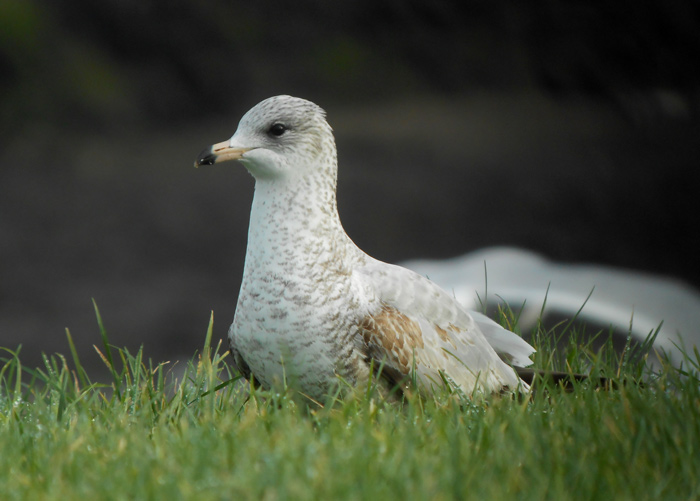
A possible first winter North American Herring Gull at Drift reservoir on November 30th – December 1st didn’t progress any further towards confirmation in the time period.
Star turn amongst the raptors this week goes to a white morph Gyrfalcon that flew in to Gleann Mor, Dunquin (Co.Kerry) at dusk on 28th.
The Orford Ness (Suffolk) Rough-legged Buzzard remained at its winter quarters from 27th November until 2nd December at least. Essex provided two further records of Rough-legged Buzzard at Abberton Reservoir (on November 30th) and at Foulness (on December 1st). A probable bird was reported briefly at the sewage works at Seafield, Edinburgh (Lothian) on 2nd.
The first Hume’s Yellow-browed Warblers of the year put in an appearance this week to head the passerine news. A one-day bird in Holkham Pines (Norfolk) on November 27th was found on the same day as a bird at Gibralter Point (Lincolnshire). The latter remained all week, although its identity was only nailed down once and for all on December 3rd. It seems to be feast or famine with this species in recent autumns, and this year definitely qualifies as the latter with just these two records confirmed so far. Of course, Hume’s is traditionally a later arrival than the much commoner Yellow-browed Warbler but even so, this feels too little too late for 2013 to be a classic year for the species.
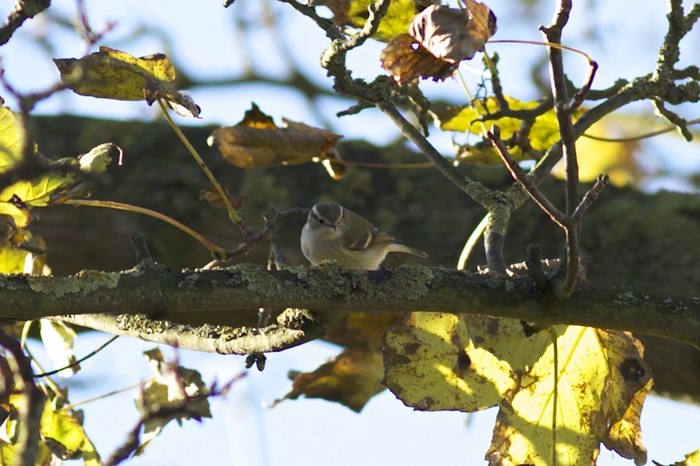
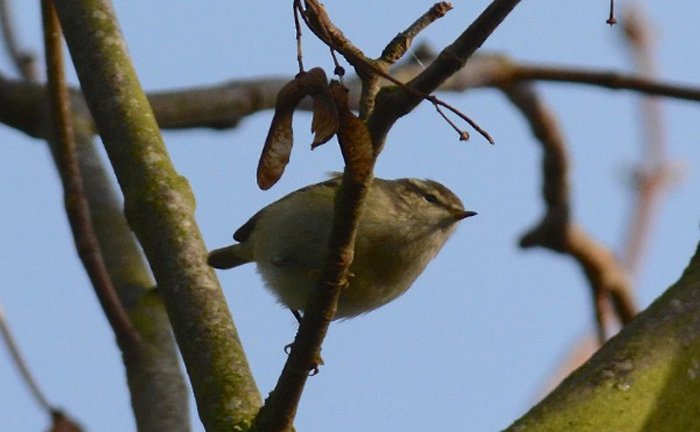
In Dorset meanwhile the start of the week was heralded by the confirmation of a Penduline Tit at Longham Lakes on 27th. Initially suspected the previous day, the bird stayed on site until the morning of Friday 29th when it was seen to fly off, and other than a report of the bird again on Sunday December 1st, that was that. With just 9 accepted prior records for Dorset (involving 11 birds, including a pair that overwintered at Lodmoor NR in 2003/2004) this near-Continent breeder remains a quality bird to catch up with in the south-west.
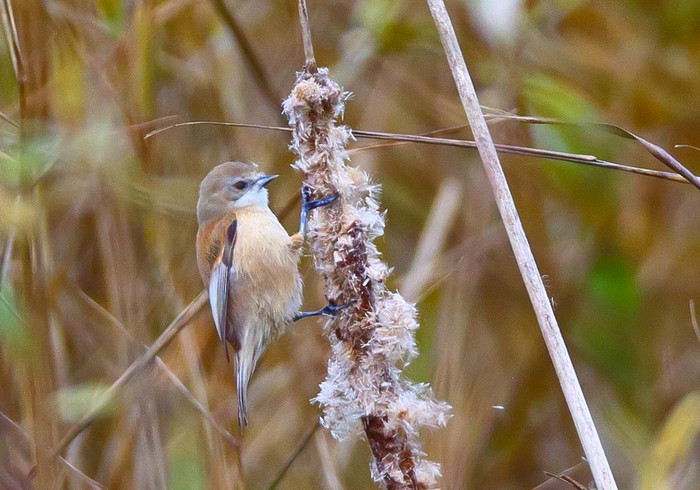
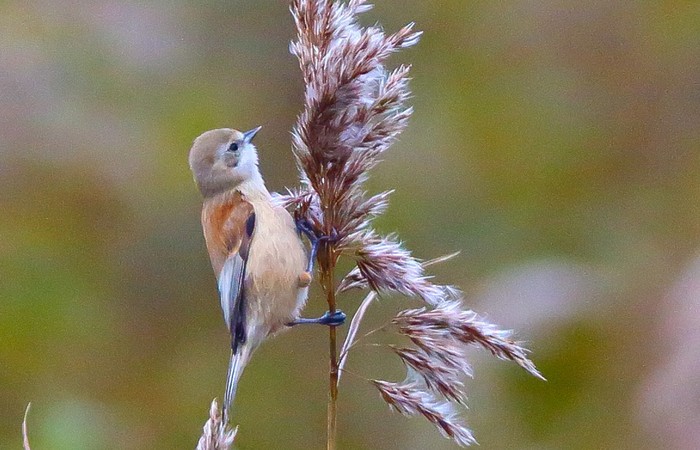
It was very much a case of as-you-were where numbers of Great Grey Shrikes were concerned during the week, with around 20 records scattered about England and Wales. With just the one record from Wales (from Denbighshire), the remainder covered a board geographic swathe and included birds in Devon, Dorset, Hampshire and Gloucestershire, across as far as West Sussex, up through Oxfordshire,Cambridgeshire, Staffordshire and Nottinghamshire, and as far north as Derbyshire. With many of these birds lingering throughout the week the establishment of wintering territories appear to be well under way.
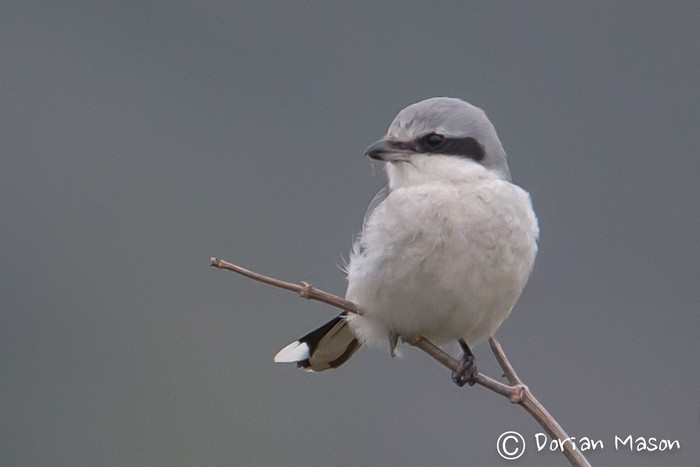
Lingering Yellow-browed Warblers were to be found at Margate Cemetery (Kent) on 27th, Lower Moors (St.Mary’s, Scilly) until 28th (with 2 birds on the island on December 3rd), Titchwell (Norfolk) until 30th, Winspit Valley (Dorset) until 30th, and Clennon Valley Lakes (Devon) all week long. Further birds were recorded at Hengistbury Head (Dorset) on 27th, Preston (Devon) and the Lizard (Cornwall) on 30th, in Ireland on Cape Clear (Co.Cork) on December 2nd, and on Portland (Dorset) on 3rd.
It was all rather quiet (the calm after the birding storm that was autumn 2013) up in Shetland this week, the islands’ sole passerine of note being the Little Bunting remaining at Halligarth on Unst until December 1st at least; another Little Bunting was at Oare Marshes (Kent) on 28th. Back down on Scilly a Serin was seen also on 28th. Not so very far across the water a probable Richard’s Pipit was reported at Trevilley, south-east of Land’s End (Cornwall) from November 29th to December 2nd, and another bird was recorded in Cornwall at Crousa Downs on 3rd.
Elsewhere in Cornwall a first-winter Rose-coloured Starling was noted coming into the evening Starling roost at Marazion from 28th to December 1st; meanwhile, it or another first-winter Rose-coloured Starling was recorded on 2nd in nearby Penzance at the same location as a bird last recorded earlier in the autumn on November 1st. Where had that bird been in the meanwhile? Meanwhile the enduring first-winter bird remained at Caister-on-sea (Norfolk) all week.
And so onto all things loxia… The popular flock of 12 Parrot Crossbills in Holt (Norfolk) remained all week, but underwent a dramatic transformation on December 2nd when their numbers swelled to an impressive 23 individuals. Elsewhere in East Anglia at Tunstall Forest (Suffolk) there were still 6 Parrot Crossbills present on 1st.
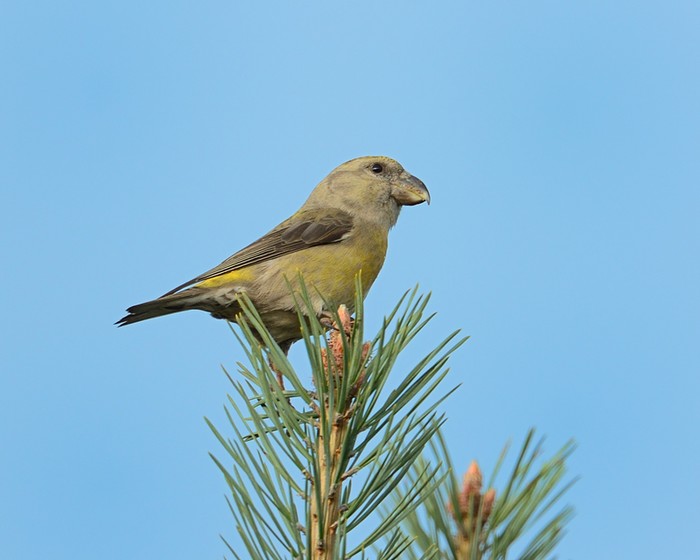
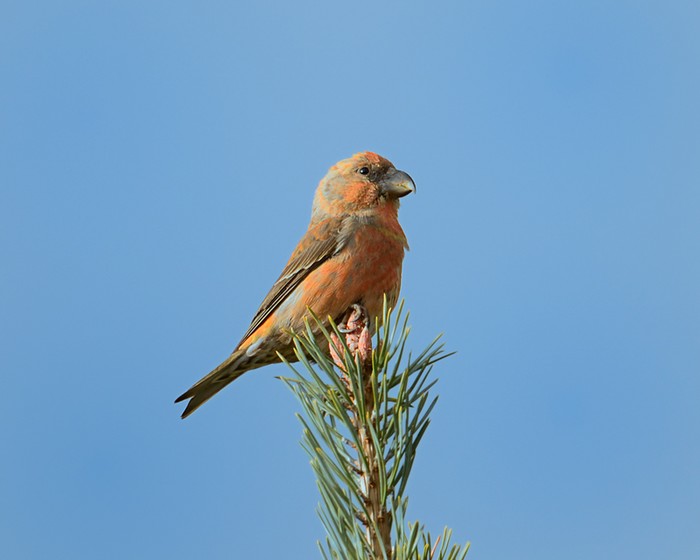
Other single bird records of Parrot Crossbill during the week were in the Wyre Forest (Shropshire/Worcestershire) on December 2nd and remaining in Kent’s Hemsted Forest until 2nd at least. Further possible birds were reported from Crabtree Hill (Gloucestershire) on November 27th and Lickey Hills CP (Worcestershire) on 28th.
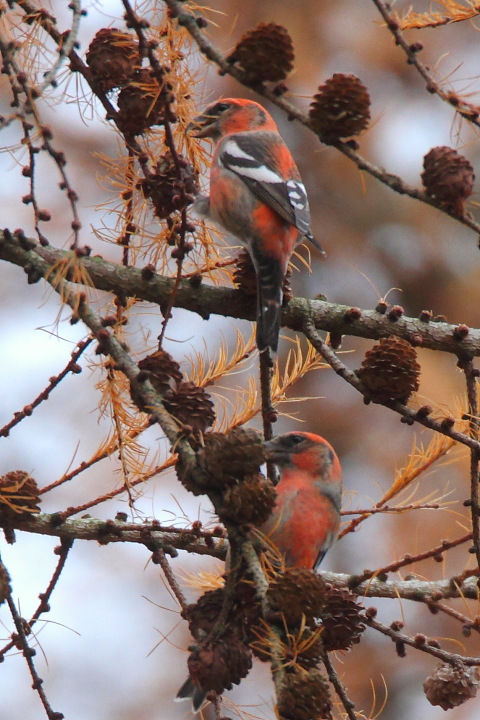
The Wyre Forest also proved attractive to Two-barred Crossbills with a small flock fluctuating between 3 and 5 individuals between 28th and December 3rd. Further small flocks of Two-barred Crossbill eye-candy were on offer in Gloucestershire at Crabtree Hill (with 9 birds present on 1st) and in South Yorkshire at Broomhead Reservoir where 2 birds recorded on 1st had grown to a flock of 7 by the following day. Single birds elsewhere included males at Lynford Arboretum (Norfolk) on 28th and in Hemsted Forest (Kent) until 2nd at least, and the long-staying elusive female at Leith Hill (Surrey) seen off and on until 2nd also.
Waxwings continued to provide very meagre pickings, worse even than last week’s enfeebled tally. The largest flock was some 60 birds in Aberdeen (Aberdeenshire) on 27th; and the next largest flock 20 birds at Harwood Dale (North Yorkshire) on 30th, reducing to 15 birds by December 2nd. All other records involved single figures of birds, totalled a mere 15 birds in all, and ranged from Scotland down through the country as far south as Cambridgeshire and Norfolk.
So here we are at the end of my first RBA Rarity Round-Up, and stepping out of the realms of cold fact into the warm, pleasant dreams of what might be to come. (And noting with some awe Mark’s impressive prediction of Brunnich’s Guillemot last week – a hunch he felt so strongly about he reiterated it in a text to me just a few hours before the news broke from North Yorkshire on December 3rd). Looking to the past for a clue to what the future might hold in the coming week, and at first glance one record leapt out at me...
...Sociable Plover, Rainham Marshes (London) from 4th-20th December (2005). Numerically not the rarest species to have occurred in the coming week, not by a long chalk (and more of that anon). But numbers of past records don’t tell the whole story... Ah, Sociable Plovers... I remember the halcyon days of the 80s and 90s when you were practically annual! With none recorded since 2008, and a global population sadly in freefall (http://www.birdlife.org/datazone/speciesfactsheet.php?id=3172 ), this one has future blocker written all over it. The next individual to pitch up on our shores might be very popular indeed with a new generation of birders.
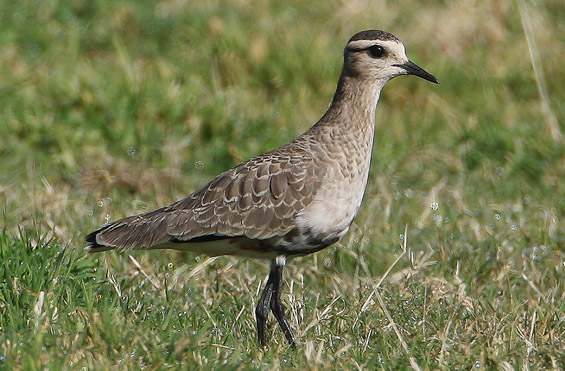
Eastern plovers aside, the early days of December have a track record for turning up a glittering array of North American species: a two-day Cliff Swallow on Tresco (Scilly) arrived on 4th (in 1995); the popular overwintering White-throated Sparrow at Willingham (Lincs) was found on 5th (in 1992) and stayed until well into the New Year (oh the horror of that cold, muddy cabbage field...); on December 6th 1990 a Yellow-billed Cuckoo was found freshly dead on arrival at Sandy (Beds), and on December 8th 1977 a deceased Ovenbird was picked up in Lough Carra Forest (Co. Mayo); sandwiched between those two that didn’t make it was the all-too-brief Great Blue Heron on St Mary’s (Scilly) in 2007; and finally, on 10th (in 1978) an overwintering Belted Kingfisher was discovered on the Bunree River (Co. Mayo).
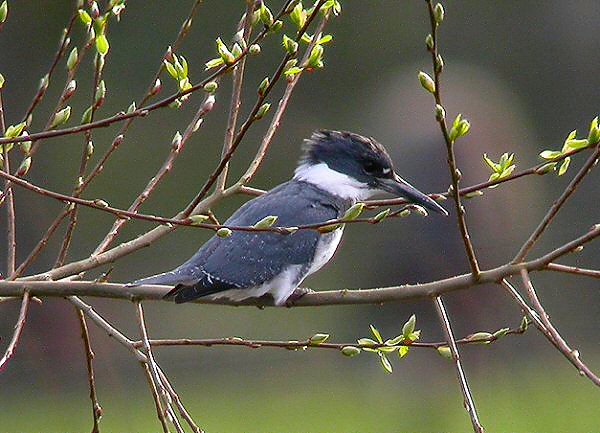
On that basis, if we’re going to dream, perhaps after an autumn that’s already yielded the second-ever British (and WP) record of Cape May Warbler and shows no signs of abating with the quality rarities, we should be hoping for something rare, colourful and American - overdue, overwintering, and over here.
Fingers crossed...
Jon Dunn
04 December 2013
Special thanks this Mark Pearson for his Bruinnch's Guillemot photo and to Steve Duffied from Western Isles Wildlife for sending us his Ivory Gull photos so soon after the bird was found
Steve Young, Tom Lowe, Mike Malpass, Chris Bromley, Ashley Fisher, Andy Williams, Paul Kelly, Richard Zamora, Mark Wright, Thomas Harris, Trevor Williams, Mark Jones, Ken Clegg Neil Rolph, Davey Farrar, Dermot Breen, Niall Keogh, Erich Hediger, Mick Widdowson, Michael Trew, Sean Foote, Dorian Mason, Steve Plume, David Fairhurst, Lewis Thompson, Steve Arlow, Darren Robson.






